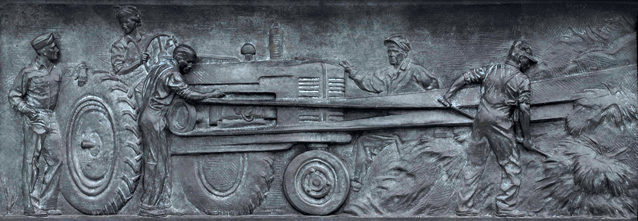Doing Their Duty by Doing Without

NPS
During the Second World War, Americans were asked to make sacrifices in many ways. Rationing was not only one of those ways, but it was a way Americans contributed to the war effort.
When the United States declared war after the attack on Pearl Harbor, the United States government created a system of rationing, limiting the amount of certain goods that a person could purchase. Supplies such as gasoline, butter, sugar and canned milk were rationed because they needed to be diverted to the war effort. War also disrupted trade, limiting the availability of some goods. For example, the Japanese Imperial Army controlled the Dutch East Indies (today’s Indonesia) from March 1942 to September 1945, creating a shortage of rubber that affected American production.
On August 28, 1941, President Roosevelt’s Executive Order 8875 created the Office of Price Administration (OPA). The OPA’s main responsibility was to place a ceiling on prices of most goods, and to limit consumption by rationing.
Americans received their first ration cards in May 1942. The first card, War Ration Card Number One, became known as the “Sugar Book,” for one of the commodities Americans could purchase with their ration card. Other ration cards developed as the war progressed. Ration cards included stamps with drawings of airplanes, guns, tanks, aircraft, ears of wheat and fruit, which were used to purchase rationed items.
The OPA rationed automobiles, tires, gasoline, fuel oil, coal, firewood, nylon, silk, and shoes. Americans used their ration cards and stamps to take their meager share of household staples including meat, dairy, coffee, dried fruits, jams, jellies, lard, shortening, and oils.
Americans learned, as they did during the Great Depression, to do without. Sacrificing certain items during the war became the norm for most Americans. It was considered a common good for the war effort, and it affected every American household.
Symbolizing Sacrifice in the World War II Memorial
The World War II Memorial symbolizes sacrifice in more than one way. A wall of gold stars recognizes the American military personnel that were killed during the war. A brass relief panel has an image of men and women working on a farm chafing wheat. Since wheat was an important product, some men who lived on farms were exempted from military service, and few of them were drafted. Families like the one depicted in the memorial would have made a major sacrifice by losing an able-bodied farmhand, symbolized by the uniformed serviceman on the left. As the war progressed, German and Italian prisoners of war were used as farm laborers to assist in the food production that carried the war effort.
Agriculture is represented elsewhere in the memorial. Wheat wreaths on the columns of states and territories ringing the memorial are a reminder of the effort and sacrifice all Americans made to defend freedom and defeat tyranny in the Second World War.
Last updated: February 9, 2024
